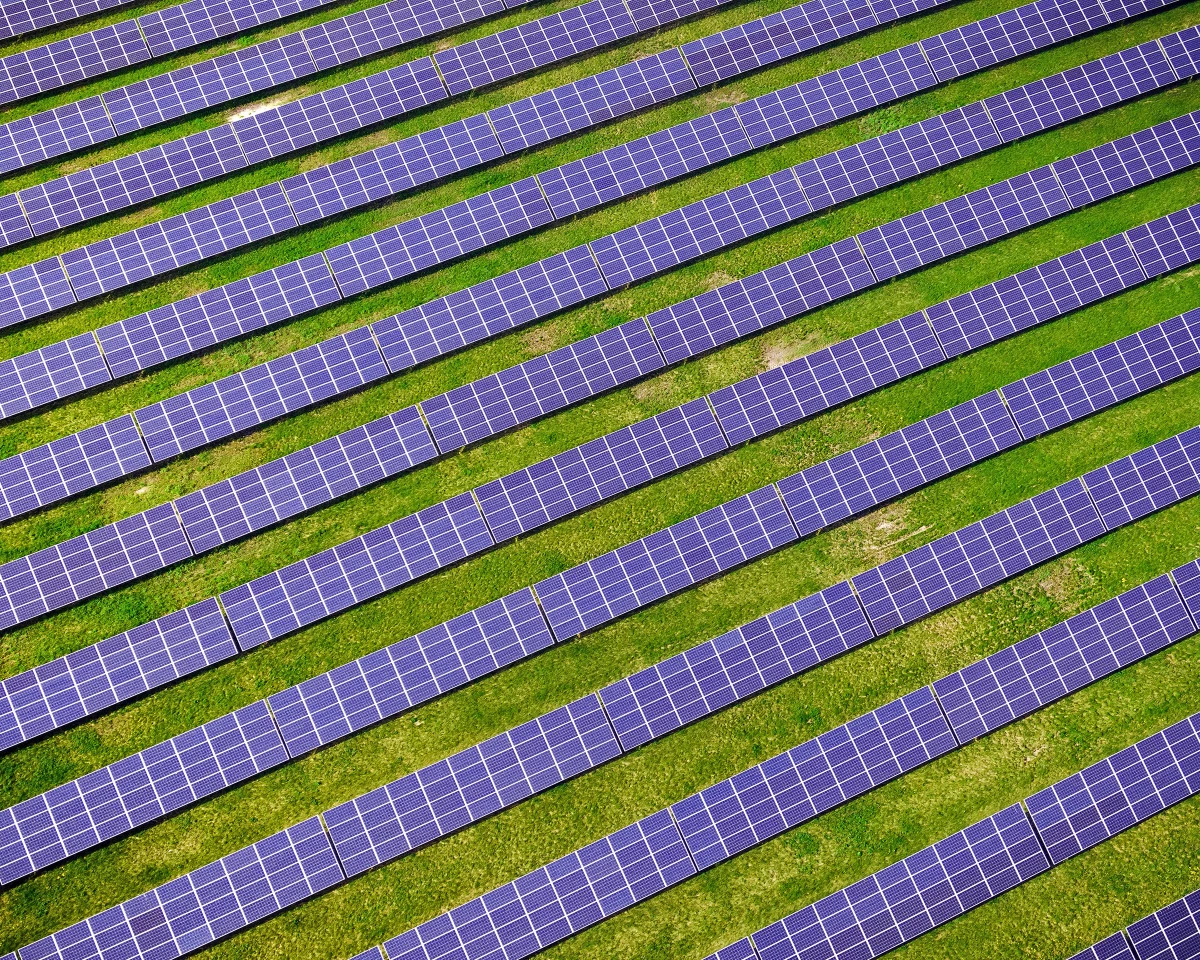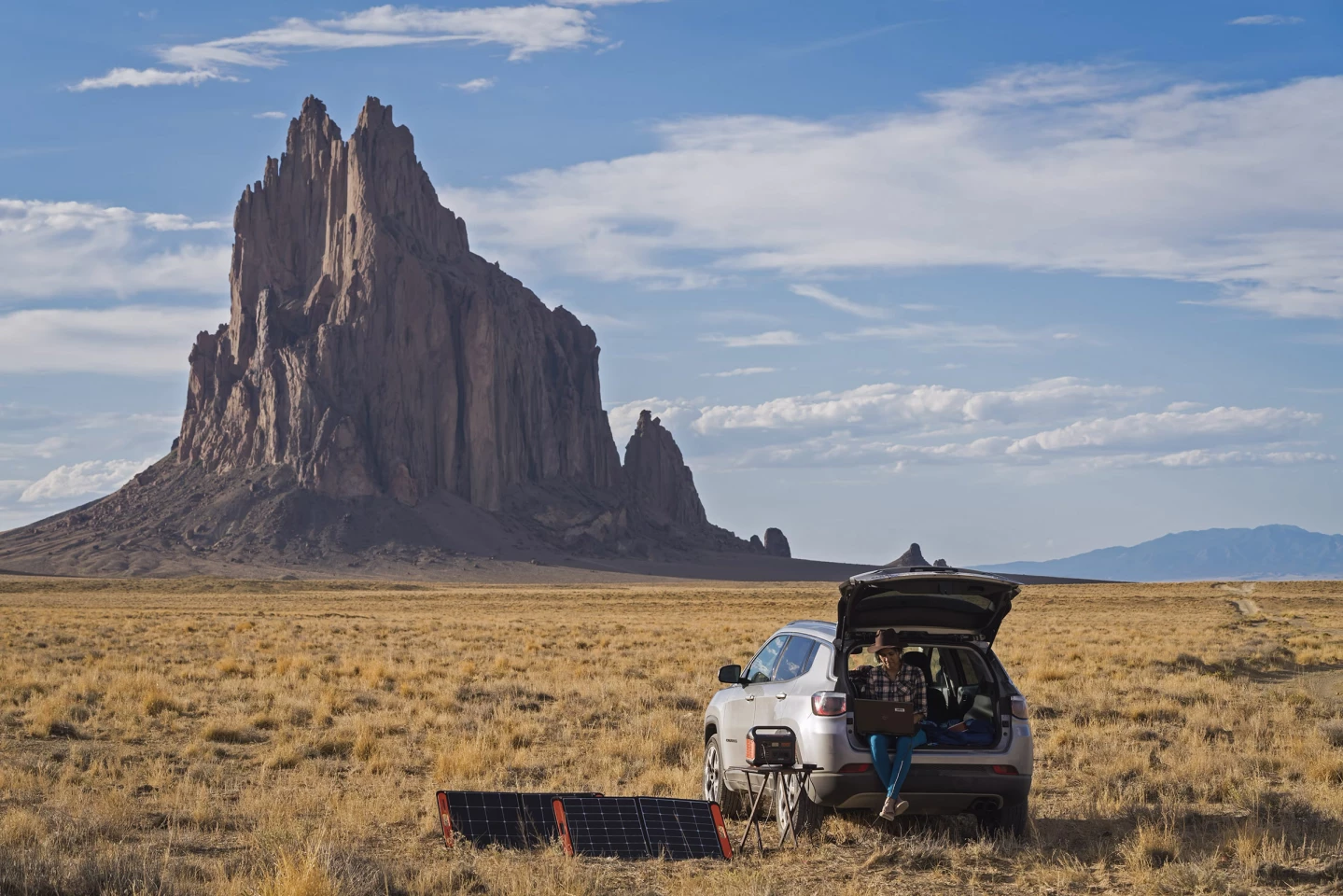From a New York rooftop in the 1800s to their first journey to space. From kidnappings and bribery to a world-changing mistake with an inkwell... Solar panels are one of humanity's greatest inventions, and their history is more fun than you thought.
The briefest history of solar:
The first time anyone installed a photovoltaic solar panel was in 1884, when Charles Fritts assembled a billiard-table-sized array on a wooden frame, on a rooftop in New York City. Fritts used selenium coated with a thin film of gold, achieving less than 1% efficiency in converting sunlight into electricity to create a current he described as "continuous, constant and of considerable force."
Fritts' project didn't go much further – gold and selenium weren't the kind of cheap, abundant materials that tend to lead to commercially competitive products.

Fast forward 20 years, and enter Canadian 'serial inventor' George Cove, a polymath who filed numerous patents around propeller design, tidal energy harvesting, AC generators, electric clocks and watches. Building on Fritts' work, Cove developed a "solar electric generator" using a semiconductor material with a band gap extremely close to that of silicon – the primary material used in today's mass-market solar panels – and a battery for energy storage and release.
Newspapers at the time reported that this generator cost around US$20 to build (the 1909 equivalent of around US$660 in today's money), and would supply the entire energy demands of an early-1900s home for around 10 years, removing the need for homeowners to get themselves wired in to the quickly developing electricity grid. His 1909 demonstration in Halifax, Nova Scotia, garnered significant investor interest. By that time, Cove had set up a workshop in New York and raised $5 million.
However, his story took a bizarre turn when he claimed he was kidnapped and offered $25,000 plus a house to abandon his work – not an outrageous assertion for the times, according to Oxford researcher Dr Sugandha Srivastav, who notes that, "During that time, Thomas Edison (of Edison Electric) and J.D. Rockefeller (founder of Standard Oil) were known to deploy a variety of pernicious tactics to drive competitors out of business."
Cove claimed he refused the offer, and was subsequently released in the Bronx Zoo. Critics, however, accused him of staging the incident as part of a scam, or to create media attention for his business. Whatever the case, Cove's business quickly tanked and never recovered – and the rise of coal and oil in 1911 soon overshadowed solar technology, effectively stalling solar innovation for the best part of 40 years.
"Obstructionism," writes Srivastav, "has been a key barrier to the development and deployment of renewable energy in the past and continues to be so today."

While very little happened around solar energy itself in the ensuing decades, other key technologies were being developed that would later underpin its resurgence. In 1918, Jan Czochralski, a Polish chemist, inadvertently discovered a method for growing single crystals (monocrystalline) used in semiconductor wafers, now known as the Czochralski method. It's still the backbone of 90% of all electronics today.
The discovery came when Czochralski accidentally dipped his pen into a crucible of molten tin instead of his inkwell (seems like a reasonable mistake), leading to the "eureka!" moment when he observed a solidifying strand of tin hanging from his pen, later verifying it was a single crystal structure.
Solar languished in the shade, if you'll pardon the pun, until as recently as 1954, when scientists Gerald Pearson, Calvin Fuller, and Daryl Chapin at Bell Labs – as in the Bell Telephone Company – developed the first practical silicon solar cell, boasting a 6% conversion efficiency – vastly improved from the sub-1%-efficiency cells of the previous century. Their breakthrough utilized the crystalline silicon method pioneered by Czochralski.
As an interesting side-note, Bell Labs invented the maser right around that time as well. In its day, Bell Labs was much like the Google X Labs of today, a hotbed of world-changing innovation and invention.
The first major application of solar cells came in 1958 with the launch of the satellite Vanguard I, making it the first solar-powered object in space. Vanguard I, which is slightly smaller than a bowling ball, is still orbiting Earth today, though it transmitted its last bytes of data in 1964 after a solid six-year run. The solar cells onboard were crucial, as batteries alone couldn't have sustained its operation for that long.
While technological breakthroughs of this magnitude were sparse from the 1960s through the 1980s, solar panel adoption slowly spread, particularly in remote locations where power lines were impractical or too cost-prohibitive. Radio and TV towers, weather stations, satellite ground stations, irrigation pumps, offshore oil platforms, lighthouses, and buoys, for example, all began relying on solar power. And in developing countries, solar technology brought electricity to remote villages, enabling basic services like lights and vaccine refrigeration.

In 1989, multi-junction cells were developed. These cells stack very thin layers of different materials to capture more energy from the sun, making them the most efficient panels to date. By 2006, researchers achieved 46% efficiency with multi-junction cells, nearly double the best traditional crystalline silicon cells. However, these cells remain prohibitively expensive, and are mainly used in specialized aerospace applications like the International Space Station, which can generate up to an astonishing 120 kW with its solar arrays.
Perovskite – a material making recent headlines for its photovoltaic potential – has led to further efficiency improvements. With its unique crystal structure, perovskite has enabled tandem cells (combining silicon and perovskite layers) to achieve over 30% efficiency.
Bifacial solar panels have also gained popularity over the past decade. Capable of capturing sunlight from both sides, they're primarily used in utility-scale solar power plants (large solar power plants designed to feed power into the grid), suspended above reflective surfaces for maximum absorption. On a personal note, I've installed bifacial panels on both my home and RV because of their efficiency.
Solar panels of today are meant to last 25-30 years before their performance begins to degrade – but even then, they only lose around a single percent of their generating capacity per year beyond their stated lifespan.
Portable and flexible solar technology is now bringing this cheap, reliable energy source to all sorts of new applications.

One of the greatest breakthroughs pertaining to solar technology, however, has been in battery storage.
Due to solar's pesky inherent limitation of only generating power for part of the day, storing excess energy has been crucial for making solar a reliable, around-the-clock energy source – particularly at municipal power grid scale.
As a range of different battery technologies have advanced and costs have decreased, solar power has become increasingly viable for providing consistent and reliable energy, even at night, using banks of batteries charged by the sun. Lithium-ion batteries paved the way, and newer technologies like lithium-iron-phosphate (LiFePO4), iron-air, and more exotic forms of mechanical energy storage continue to improve in energy density and cost-effectiveness.
It's fascinating to watch these technologies evolving and finding their place in a future clean energy mix – some to deal with short-duration, high-speed power demand spikes, others focused on long-term, slow-release grid firming to make sure grids remain stable as the average day's solar energy generation drops through the winter and rises through the summer.
Despite a wonky start to the 1900s, solar is now a juggernaut, and one of the hottest forms of energy as the world focuses on a race to zero carbon emissions by 2050. Utility-grade solar power is currently the second-cheapest form of electricity on the market, trailing only onshore wind energy – and in terms of Levelized Cost of Energy (LCoE), it's around half the price of coal-fired power.
From Charles Fritts' first rooftop contraption, it's arguably become one of humanity's most important innovations – a legitimately reliable, economically viable form of clean energy capable of scaling fast enough to keep up with humanity's ever-growing appetite for electricity. It's a remarkable story, and one that we continue to see developing in real time.









